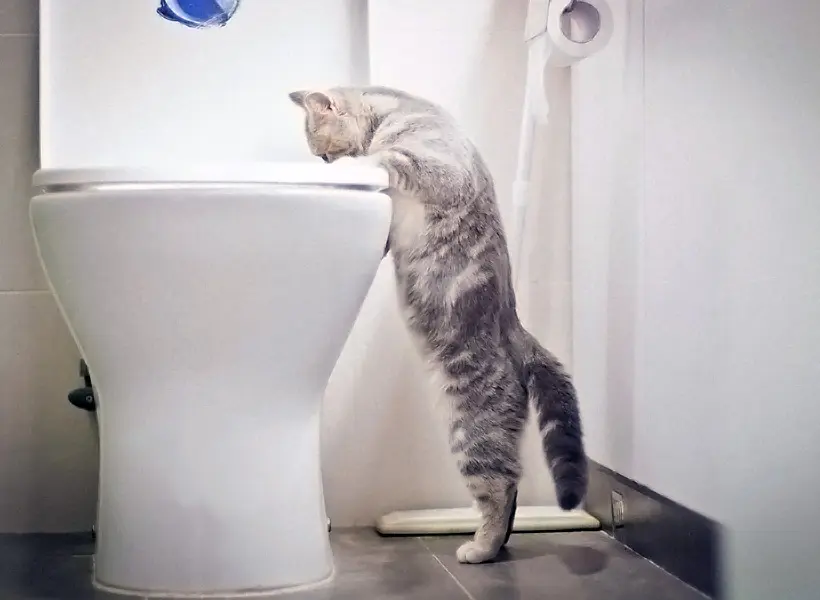Why Flushing Cat Poop Down Your Toilet Isn't a Good Idea - Advice for Proper Handling
Why Flushing Cat Poop Down Your Toilet Isn't a Good Idea - Advice for Proper Handling
Blog Article
Just how do you feel about How to Dispose of Cat Poop and Litter Without Plastic Bags?

Intro
As feline proprietors, it's vital to bear in mind how we deal with our feline buddies' waste. While it may seem practical to flush feline poop down the toilet, this practice can have detrimental effects for both the environment and human health.
Alternatives to Flushing
Fortunately, there are safer and more liable methods to throw away cat poop. Take into consideration the following choices:
1. Scoop and Dispose in Trash
One of the most common approach of dealing with cat poop is to scoop it right into a naturally degradable bag and throw it in the garbage. Be sure to utilize a dedicated trash inside story and take care of the waste without delay.
2. Usage Biodegradable Litter
Select biodegradable pet cat clutter made from products such as corn or wheat. These trashes are environmentally friendly and can be safely disposed of in the garbage.
3. Bury in the Yard
If you have a backyard, take into consideration burying cat waste in a designated location away from veggie yards and water resources. Make certain to dig deep adequate to stop contamination of groundwater.
4. Mount a Pet Waste Disposal System
Buy an animal waste disposal system specifically developed for pet cat waste. These systems utilize enzymes to break down the waste, lowering smell and ecological impact.
Health Risks
Along with environmental problems, purging cat waste can additionally position wellness risks to humans. Pet cat feces may contain Toxoplasma gondii, a bloodsucker that can trigger toxoplasmosis-- a possibly severe ailment, especially for pregnant females and individuals with weakened immune systems.
Ecological Impact
Purging feline poop presents harmful pathogens and bloodsuckers right into the water, positioning a substantial danger to water ecosystems. These pollutants can negatively impact aquatic life and compromise water top quality.
Final thought
Accountable pet dog possession extends beyond providing food and shelter-- it additionally entails proper waste administration. By avoiding flushing pet cat poop down the commode and opting for alternate disposal techniques, we can lessen our ecological impact and protect human health.
Why Can’t I Flush Cat Poop?
It Spreads a Parasite
Cats are frequently infected with a parasite called toxoplasma gondii. The parasite causes an infection called toxoplasmosis. It is usually harmless to cats. The parasite only uses cat poop as a host for its eggs. Otherwise, the cat’s immune system usually keeps the infection at low enough levels to maintain its own health. But it does not stop the develop of eggs. These eggs are tiny and surprisingly tough. They may survive for a year before they begin to grow. But that’s the problem.
Our wastewater system is not designed to deal with toxoplasmosis eggs. Instead, most eggs will flush from your toilet into sewers and wastewater management plants. After the sewage is treated for many other harmful things in it, it is typically released into local rivers, lakes, or oceans. Here, the toxoplasmosis eggs can find new hosts, including starfish, crabs, otters, and many other wildlife. For many, this is a significant risk to their health. Toxoplasmosis can also end up infecting water sources that are important for agriculture, which means our deer, pigs, and sheep can get infected too.
Is There Risk to Humans?
There can be a risk to human life from flushing cat poop down the toilet. If you do so, the parasites from your cat’s poop can end up in shellfish, game animals, or livestock. If this meat is then served raw or undercooked, the people who eat it can get sick.
In fact, according to the CDC, 40 million people in the United States are infected with toxoplasma gondii. They get it from exposure to infected seafood, or from some kind of cat poop contamination, like drinking from a stream that is contaminated or touching anything that has come into contact with cat poop. That includes just cleaning a cat litter box.
Most people who get infected with these parasites will not develop any symptoms. However, for pregnant women or for those with compromised immune systems, the parasite can cause severe health problems.
How to Handle Cat Poop
The best way to handle cat poop is actually to clean the box more often. The eggs that the parasite sheds will not become active until one to five days after the cat poops. That means that if you clean daily, you’re much less likely to come into direct contact with infectious eggs.
That said, always dispose of cat poop in the garbage and not down the toilet. Wash your hands before and after you clean the litter box, and bring the bag of poop right outside to your garbage bins.
https://trenchlesssolutionsusa.com/why-cant-i-flush-cat-poop/

Do you really like reading about Don’t flush cat feces down the toilet? Post feedback directly below. We will be pleased to know your thoughts about this write-up. In hopes to see you back again in the near future. For those who liked our page if you please remember to share it. We enjoy reading our article about Can You Flush Cat Poop Down The Toilet?.
Call Us Today Report this page